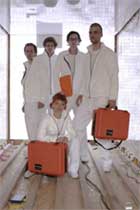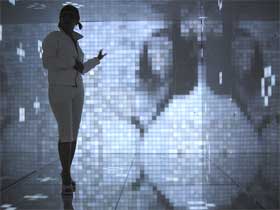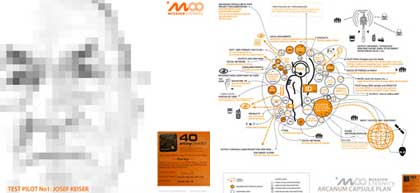Mike Kuniavski, the curator of ISEA's interactive C4f3, picked up his five favourite projects of the festival. One of them is Mission Eternity by etoy, a white 20 foot sarcophagus that hosts a screen made of 17'000 LED lights and the ashes of the first Mission Eternity Pilots (who contribute their personal data and mortal remains). The sarcophagus was created from a shipping container and is used to archive and transport the "massive body of information" left behind after our death.


In Mike's words: The basic notion is to use the power of networked digital technology and inexpensive storage to keep aspects of us alive after we're dead. On one conceptual level, it externalizes the network of memories and documents we leave behind, and places them into a digital world, which is projected into the physical one as a shipping container sarcophagus filled. The sarcophagus is simultaneously a display, an environment and metaphor, and as it ages, etoy will replace the LEDs with the ashes of the people whose digital selves they manage.

Under the protection of thousands of Mission Eternity Angels (the living who provide a few mega bytes of their digital storage capacity) the Mission Eternity Pilots travel space and time forever. The Angels should be willing to share at least 50MB of disk space to host Arcanum capsules - the data of ME Pilots. A social back up solution establishes a p2p network that guarantees transparent long-term storage of data. The system and therefore the pilots only survives if Angels donate space.
The short-term plan (2006-2016) is to install an interactive city of the living and the dead that reconfigures the way information society deals with the conservation and loss of memory, time and death.
Sources for the images: digital brainstorming, etoy blog.
More afterlife projects:
Michele Gauler's Digital Remains; Auger and Loizeau's Afterlife; Merel Vantellingen's Spinning Tops.

